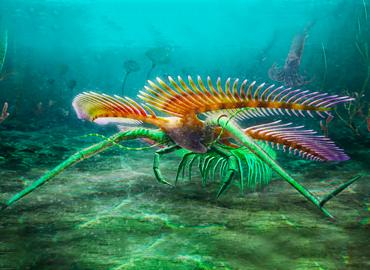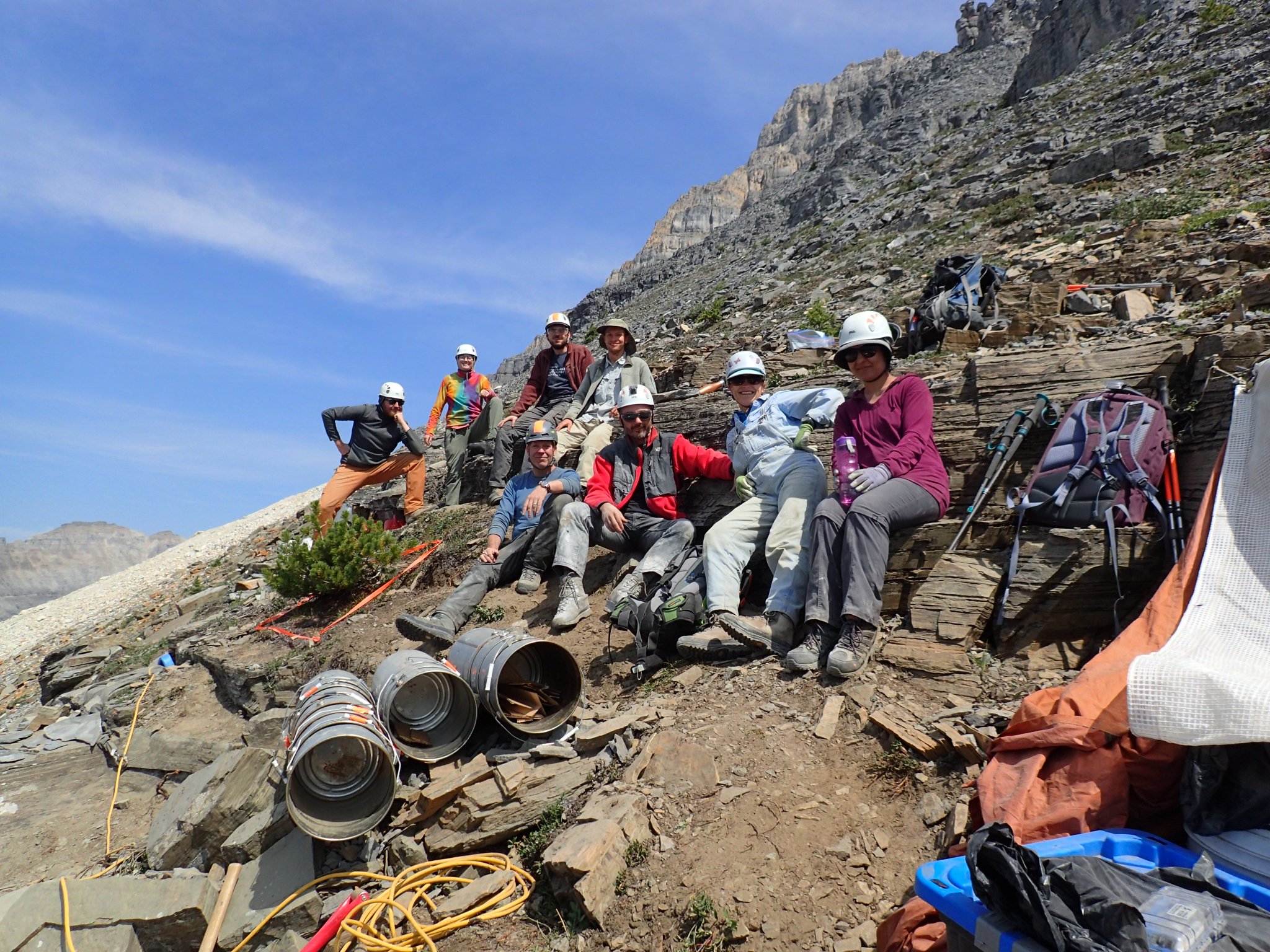PhD candidate Alejandro Izquierdo-López is helping uncover the history of life on Earth
Five hundred million years ago, the Earth was a very different planet. There were no land plants or animals, and much of what we today call North America was submerged beneath a shallow sea some 100 metres deep. In those waters were creatures which, while unfamiliar, were the first animals on the planet to resemble those living today.

“This was the Cambrian period and it was the point in the history of life on Earth where we saw the emergence of many groups of animals,” says Alejandro Izquierdo-López. “It’s when we saw the emergence of many of the body structures — eyes, segmentation, specialized appendages — that we see today.”
Izquierdo-López is a PhD candidate in the Faculty of Arts & Science’s Department of Ecology & Evolutionary Biology (EEB). He is a member in the lab of Jean Bernard-Caron, an EEB associate professor, cross-appointed with the Department of Earth Sciences, and Richard M. Ivey Curator of Invertebrate Paleontology at the Royal Ontario Museum (ROM).
Izquierdo-López and his collaborators at U of T and the ROM are helping reveal — fossil by fossil — what life was like during the Cambrian and the geologic period that followed, the Ordovician. The fossils they are discovering in the Burgess Shale in the British Columbian Rockies and in the rocks of Ontario paint a picture of an alien world.

When did you first become interested in science?
I’ve been interested in science ever since I was a kid. I visited natural history museums with my parents. And I loved collecting things like different kinds of bugs and mushrooms. I also liked Pokémon characters and, in a way, maybe that’s part of why I’m interested in collecting things and sorting them.
But I was never a kid who was obsessed with dinosaurs. And when I was an undergrad, what fascinated me more was the idea of deep time and understanding how evolution works — not over thousands of years or a million years — but over tens and hundreds of millions of years. I became very interested in this aspect of evolution over the very, very long term.
What are the scientific questions you’re now most interested in answering now?
Mostly what I work on is how the anatomy of animals — their morphology — evolves over time. And how these different forms function and how those functions also evolve. For example, how does a limb evolve over time and adapt to different functions like swimming or grabbing onto prey?
I’m particularly interested in the evolution of arthropods, the most diverse animal group on Earth. Arthropods include bees, ants, crabs, spiders — basically anything with more than four legs and with bodies divided into segments. Arthropods are very useful in understanding evolution over deep time because there are a lot of species, and we have a decent fossil record. Also, we have a lot of different features we can study like jaws, limbs, segmentation and so on.
You were a co-author on a paper published in March 2022 that described a 450-million-year-old fossil of a new species of arthropod know as a marrellomorph. What can you tell us about this animal?
It’s called Tomlinsonus dimitrii and it’s a very strange arthropod. Paleontologists haven’t discovered many marrellomorphs — probably less than ten species. So, they’re quite rare. The one we discovered is one of the only specimens from the Ordovician period from North America and the first marrellomorph found in Ontario. It’s also the first Ordovician site in Ontario to show the preservation of soft structures, rather than hard ones like with trilobites. If it wasn’t for that, we would never found it. It is a very special place!
This animal has a carapace — a shell — with spines, and a small body with lots of segments. And it has several pairs of appendages attached to the head. We don’t know exactly where it sits in the arthropod “tree of life,” but we know that at some point, this group disappeared from the fossil record.
You were also the first author on a paper published in July 2022 that described another fossil discovery. What did you and your colleagues find?
This animal is from the Cambrian period so it’s over 500 million years old. It’s called Balhuticaris voltae and it’s what we call a bivalved arthropod because its carapace has two parts. It’s a large creature for this period — in fact, it’s the largest Cambrian bivalved arthropod we know of. It’s about 25 centimeters long — which may not seem big but at that time, most creatures were no more than a few centimeters long.
It’s also very strange because normally, the carapace would cover half of the body or more, but this animal’s carapace only covers about one quarter of the body. Plus, the carapace makes the creature look like it has two very long ears. So, people have called it the Beagle or Bassett Hound of the Cambrian. Besides that, this Balhuticaris has 110 segments, each with a pair of legs, so it looks like a centipede or millipede.
We think that Balhuticaris and its relatives are the ancestors of a group of animals called mandibulates, the group of arthropods that includes crustaceans, insects, centipedes and millipedes. Balhuticaris voltae is probably one of the first animals in that group.
You found this fossil at the Burgess Shale in British Columbia, a site renowned for its Cambrian fossils. Can you describe what it’s like working there?
The Burgess Shale is in a very isolated spot at high altitude that we get to by helicopter. There’s no internet, telephones, running water or washrooms. So, we’re in the middle of nowhere, living in tents for anywhere from two weeks to a month. Our day starts at 9 a.m. in the quarry where we break up rocks and look for fossil specimens and ends at around 7 p.m. when we go back to camp for dinner. So, basically, our day is spent breaking rocks and collecting specimens. It can be quite hard.
But you’re in a fantastic landscape. You wake up every day and see mountains and blue sky. Plus, being at the Burgess Shale is a unique opportunity. It’s a very well-known, scientifically important site — so it’s a privilege to be there.
But you spend more time searching through museum collections than you do in the field, don’t you?
Lately, I mostly work with collections in museums. There are a lot of specimens in museums around the world and our Burgess Shale collection in the ROM is immense with hundreds of thousands of specimens. It’s priceless. Sometimes, you just go through the collection and you’ll find something totally unexpected. Going into the field is exciting and you’ll always find something new, but the collection at the ROM still holds many mysteries.
